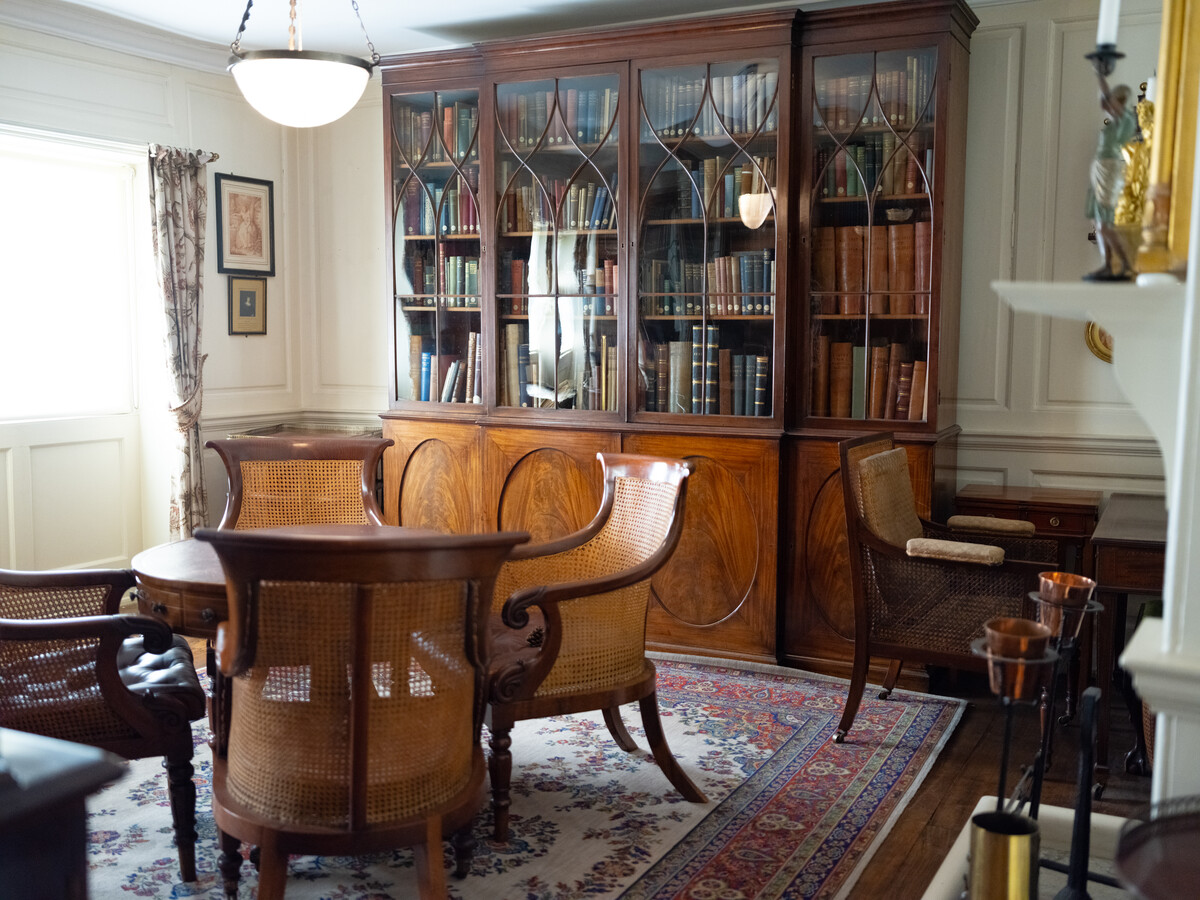Author: Megan Stratford
Directions: Leave the room and cross over to the bedroom opposite.
Transcript
Welcome to the South West Room. Come in and immerse yourself in the bright and airy space, filled with the furniture and books that once lived in Charles Thomas Stanford’s study downstairs. This room is filled with memories of the British Empire, and the bookshelves echo the colonialist period, frozen in time.
If you look to the bookshelf to the right of the window you will find books of letters from Stalingrad during the First World War, but what peaks my interest are the three large tomes filled with photographs from the Thomas Stanford family’s holiday to Egypt in 1901. These snapshots taken from the time of Queen Victoria’s death, reflect the romanticised vision that the British upper classes had of faraway lands. There are two Egyptian statues on the mantlepiece that, along with the books, help you to travel away to beautiful countries with more sunshine than buttoned up Great Britain.
Wander over to the opposite bookshelves and you will find signed first edition books by Rudyard Kipling, a friend of the family, and a believer in Empire. Both he and Charles, who was the chairman of the Sussex Archaeological Society, were incredibly interested in mythology and tales of fairies and sprites. They would have spent hours at the dinner table downstairs discussing Devil’s Dyke and the stories that influenced books like The Puck of Pook’s Hill. This house is full of folklore that would have made even Kipling shudder with excitement.
The folklore bends into the infamous ghost stories, and this room is known as the most haunted in the house. Listen carefully, and you might hear the screams and shouts heard by the current staff, or watch out for the grey lady who might wander in and look at the bookshelves with you, maybe dreaming of those distance lands that she cannot visit.

